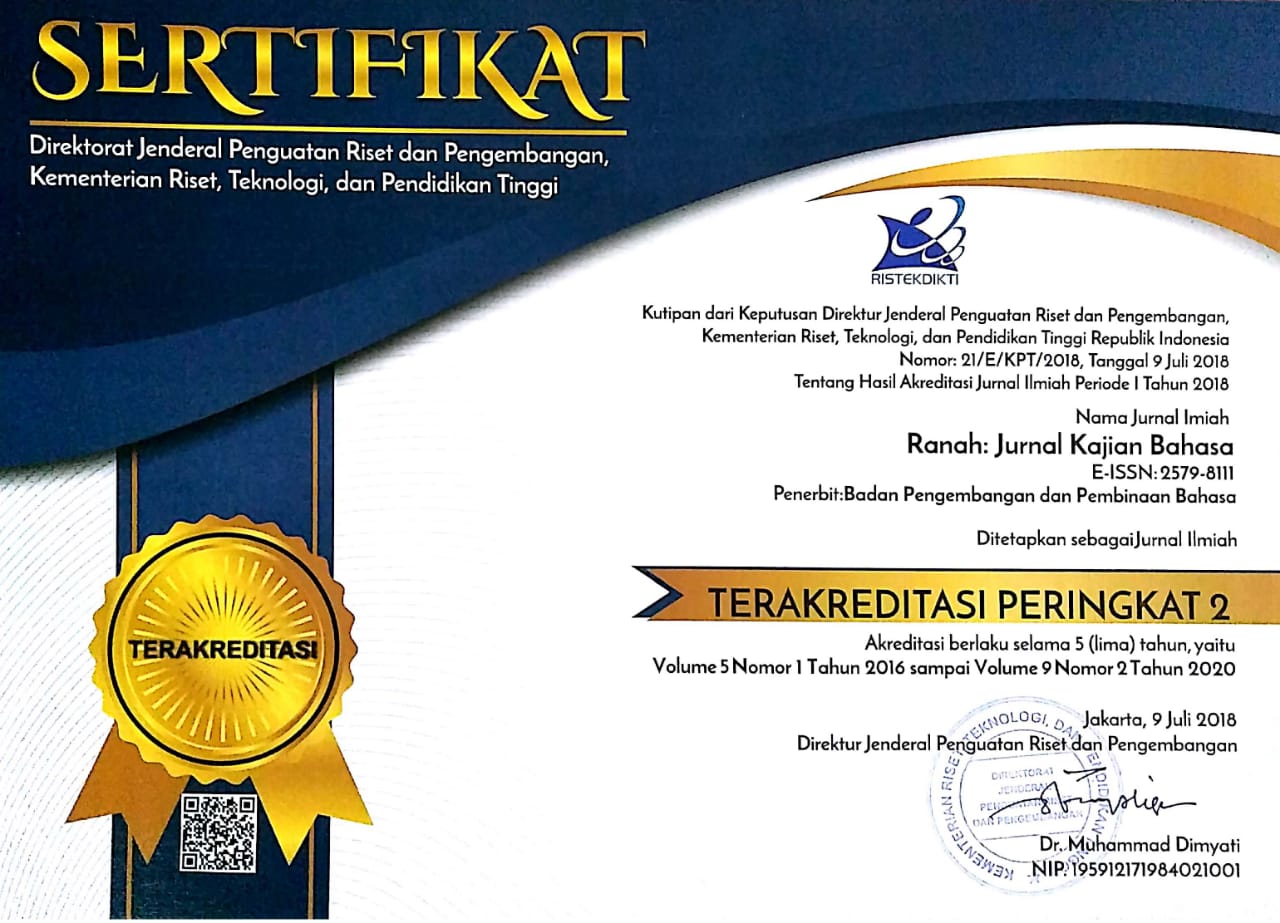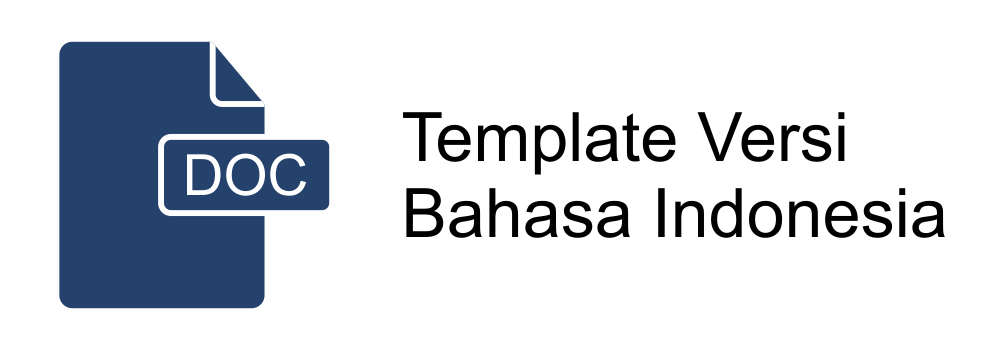MERAK, IKAN DAN SINGANDARUNG: CITRA SASTRA MASA PERALIHAN HINDU – ISLAM DI LOMBOK
Abstract
Abstrak: Artikel ini bertujuan untuk mendiskusikan bagaimana citra sastra petualangan turut berperan penting pada masa peralihan Hindu–Islam dalam struktur masyarakat Lombok. Salah satu contoh karya sastra peralihan yang masyhur di tengah masyarakat Lombok adalah teks Puspakrema. Sedangkan di dunia kesusasteraan Melayu, Hikayat Indraputra populer pada masa peralihan Hindu–Islam sejak abad ke-15. Kedua karya sastra ini termasuk ke dalam genre sastra petualangan Nusantara. Pendekatan sastra bandingan digunakan oleh peneliti untuk menemukan berbagai persamaan dan perbedaan baik struktur maupun motif cerita dalam kedua karya sastra ini. Secara umum, persamaan keduanya sebagai karya sastra petualangan adalah perjalanan tokoh utama demi mencapai tujuan kebaikan bagi sesamanya. Persamaan juga terlihat pada unsur-unsur cerita seperti penggunaan ikan dan burung merak sebagai simbol universal dalam kesusastraan Nusantara. Adapun perbedaan-perbedaan yang ada dalam kedua karya sastra ini seperti adanya tokoh Singandarung atau singa bersayap yang berasal dari tradisi Hindu‑Bali dalam Puspakrema. menunjukkan kesusastraan Islam yang memiliki unsur kesusasteraan Hindu Bali tetap populer di kalangan masyarakat Sasak sebagai bagian dari identitas dan kekayaan khazanah kesusastraan di Lombok.
--
Abstract: This article aims to discuss how adventurous literary images play an important role in the Hindu-Islamic transition in the structure of Lombok's society. One of the famous classical literature in Lombok is the text of Puspakrema. Whereas in the Malay literary world, Hikayat Indraputra was popular during the Hindu-Islamic transition since the 15th century. Both of these literary works belong to the archipelago adventure literary genre. The comparative literary approach is used by researcher to find various similarities and differences in both the structure and motives of stories in these two literary works. In general, the similarity of the two as adventurous literary works is the journey of the main character in order to achieve the goal of kindness for each other. Similarities can also be seen in story elements such as the use of fish and peacocks as universal symbols in Nusantara literature. As for the differences that exist in these two literary works such as the presence of Singandarung figures or winged lion originating from the Balinese Hindu tradition in Puspakrema shows that Islamic literature has elements of Balinese Hindu literature remains popular among the Sasak people as part of the identity and wealth of literary treasures on Lombok.
Keywords
Full Text:
PDF (Bahasa Indonesia)References
Bassnett, Susan. 1993. Comparative Literature: A Critical Introduction. Cambridge: Blackwell
Braginsky, Valdimir. 1993. The Systems of Classical Malay Literature. Leiden: KITLV Press.
_____. 1998. Yang Indah, Berfaedah dan Kamal Sejarah Sastra Melayu dalam Abad 7 – 19. Jakarta: Indonesia – Netherlands Cooperation in Islamic Studies (INIS).
Iskandar, Teuku. 1996. Kesusasteraan Klasik Melayu Sepanjang Abad. Jakarta: Libra.
Fang, Liaw Yock. 2016. Sejarah Kesusasteraan Melayu Klasik. Cet. Ke-2. Jakarta: Yayasan Obor Indonesia.
Jamaluddin, “Sejarah Tradisi Tulis dalam Masyarakat Sasak Lombok” dalam Ulumuna Vol. IX Edisi 16 No. 2 Juli-Desember 2005, pp 369-384.
Joshi, V. 1980. “Kathāsaritsāgara: A Cultural Study”. Disertasi. Pune: Deccan College.
Kadgaonkar, S. 1993. “The Peacock In Ancient Indian Art And Literature” in Bulletin of the Deccan College Research Institute, 53, 95-115.
Marrison, G.E. 1955. “Persian Influences in Malay Life (1280-1650)” in Journal of the Malayan Branch of the Royal Asiatic Society, 28(1 (169)), 52-69.
_____. 1997. “The Literature of Lombok: Sasak, Balinese, and Javanese” in Indonesia and the Malay World, 73, pp. 221 – 234.
_____. 1999. Sasak and Javanese Literature of Lombok. Leiden: KITLV Press.
Meij, Th. C. van der. 2002. Puspakrema: A Javanese Romance from Lombok. Leiden: Research School of Asian, African, and American Studies Universiteit Leiden The Netherlands.
_____. 2011. “Sastra Sasak Selayang Pandang” dalam Jurnal Manassa vol. 1 no. 1, pp 17-45.
Mulyadi, S.W.R. 1983. Hikayat Indraputra A Malay Romance. AM Dordrecht and Cinnaminson N.J.: Foris Publications.
Mustopo, Muhammad Hatib. 2001. Kebudayaan Islam di Jawa Timur: Kajian Beberapa Unsuru Budaya Peralihan. Yogyakarta: Jendela.
Pigeaud, Theodore G. Th. 1967. Literature of Java Catalogue Raisonne of Javanese Manuscripts in the Library of the University of Leiden and Other Public Collections in the Netherlands Volume I: Synopsis of Javanese Literature 900 – 1900 A.D. Leiden: KITLV and Springer Science.
Rahayu, Eko Wahyuni. 2003. “Barong Using dalam Upacara Ider Bumi di Desa Kemiren Banyuwangi, Jawa Timur”. Tesis. Yogyakarta: Pascasarjana Universitas Gadjah Mada.
Rudenko, S. 1958. “The Mythological Eagle, the Gryphon, the Winged Lion, and the Wolf in the Art of Northern Nomads” in Artibus Asiae, 21(2), 101-122.
Wilasa, I Putu, I Wayan Sudiarta, I Nyoman Rediasa. 2017. “Karakteristik Patung Singa Daerah Bali Utara” dalam Jurnal Pendidikan Seni Rupa UNADIKSA, 8 (2), pp. 1-8.
Winstedt, Richard Owen. 1969. A History of Classical Malay Literature. New York and Kuala Lumpur: Oxford University Press.
_____. 1943. “Nature in Malay Literature and Folk Verse” in The Journal of the Royal Asiatic Society of Great Britain and Ireland, 1, pp. 27 – 33.
Zepetnek, Steven Totosy de. 1998. Comparative Literature; Theory, Method, Application. Amsterdam– Atlanta: Rodovi BV.
DOI: https://doi.org/10.26499/jentera.v8i2.1524
Refbacks
- There are currently no refbacks.






















